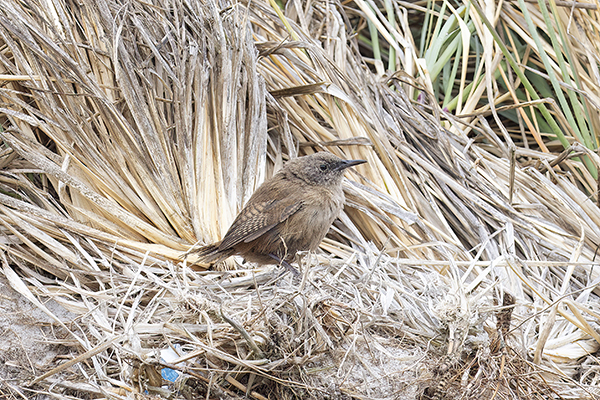Leaving Gryviken behind us we headed out to the open sea again and headed north to the Falklands. Elke, on of our guides on board, had told me the waters around Bird Island were some of the richest in the region and we'd expect to see loads of seabirds! She wasn't wrong! On this leg of the trip I had some of my best views of several species including Southern Giant Petrel , Wandering Albatross, Grey-headed Albatross and Southern Royal Albatross. As usual I spent as much time as I could on the bridge and was talking to someone about albatross identification when a bird flew close by and, spotting it out the corner of my eye, my overloaded brain took a few seconds to realise it wasn't just another Black-browed but a Grey-headed! By the time my brain had registered and processed the information the bird was quite a distance behind us but I managed one reasonable photo.
 |
| Grey-headed Albatross |
 |
| Black-browed Albatross |
 |
| juvenile Southern Giant petrel |
 |
| juvenile Wandering Albatross |
If you look closely at the photos above of the juvenile Wandering Albatross and Southern Giant Petrel you
can see a drop of water at the tip of the bill. This isn't a 'runny nose' or an indication of bird flu but a secretion from the slat gland. Many seabirds can eat salty prey and drink seawater as they have a built in desalination unit that allows them to secrete excess salt. This slat gland is based in the front of the head and salt rich water is secreted via the nostril and drips down to thee tip of the bill. An amazing adaptation which means these birds can live their life at sea without having to drink freshwater.
 |
| Light-mantled Albatross |
 |
| South Georgia Diving Petrel |
The diving petrels were like little stones skimming above the surface before dropping on the the sea and disappearing!
The juvenile Wandering Albatross spent about an hour passing backwards and forwards alongside the Plancius, or in the wake, eying us curiously at some points level with the camera. We also saw adult Wandering Albatross and our first Northern Royal of the trip.
 |
| sub-adult Wandering Albatross |
 |
| adult Wandering Albatross |
This stage of our trip took two days and it was on the final days approach to the Falklands that I picked out a bird that had me puzzled. I couldn't work put what it was was and it wasn't on the list of birds we'd expect to see that was pinned up and updated daily in the lounge.......
I couldn't find it in the books I'd brought with me in my cabin or in the books on the bridge so was getting more and more puzzled. When Rgis arrived on deck I showed him the photos nd he to was puzzled and started looking through various guides. It didn't take long for him to realise that it was a species he'd ringed on Kerguelen Island - Grey Petrel! Luckily it hung around and he managed to see it as well.
 |
| Grey Petrel |
We saw lots of whales and dolphins on this leg of the trip and many more people spent time on deck. At one point we had Humpbacks all around the boat but one of the passengers, Johannes, spotted something different. Spotting a large blow he called it and it was identified immediately by Elke as a Blue Whale! One of the species I really wanted to see but didn't hold out much hope as their numbers are still critically low after years of hunting. Blue Whales are the biggest animals on the planet and the biggest to ever have lived. With only around 8,000 individuals in the South Atlantic it was a special moment.


My on board slipped back into an easy routine. Up around 5 am and skipping breakfast to spend as much time as possible on deck, a quick lunch, daily-briefing by Edu around 6.30 pm followed by dinner. Another quick sea-watch from the bridge deck and then quite often working until midnight downloading photos editing them. It was beginning to take its toll and I succumbed to the heavy cold that that been going round and my eyes were red rimmed with the salt and wind but I was loving every minute.









%20Thrush%20%20310124.jpg)





















































































































